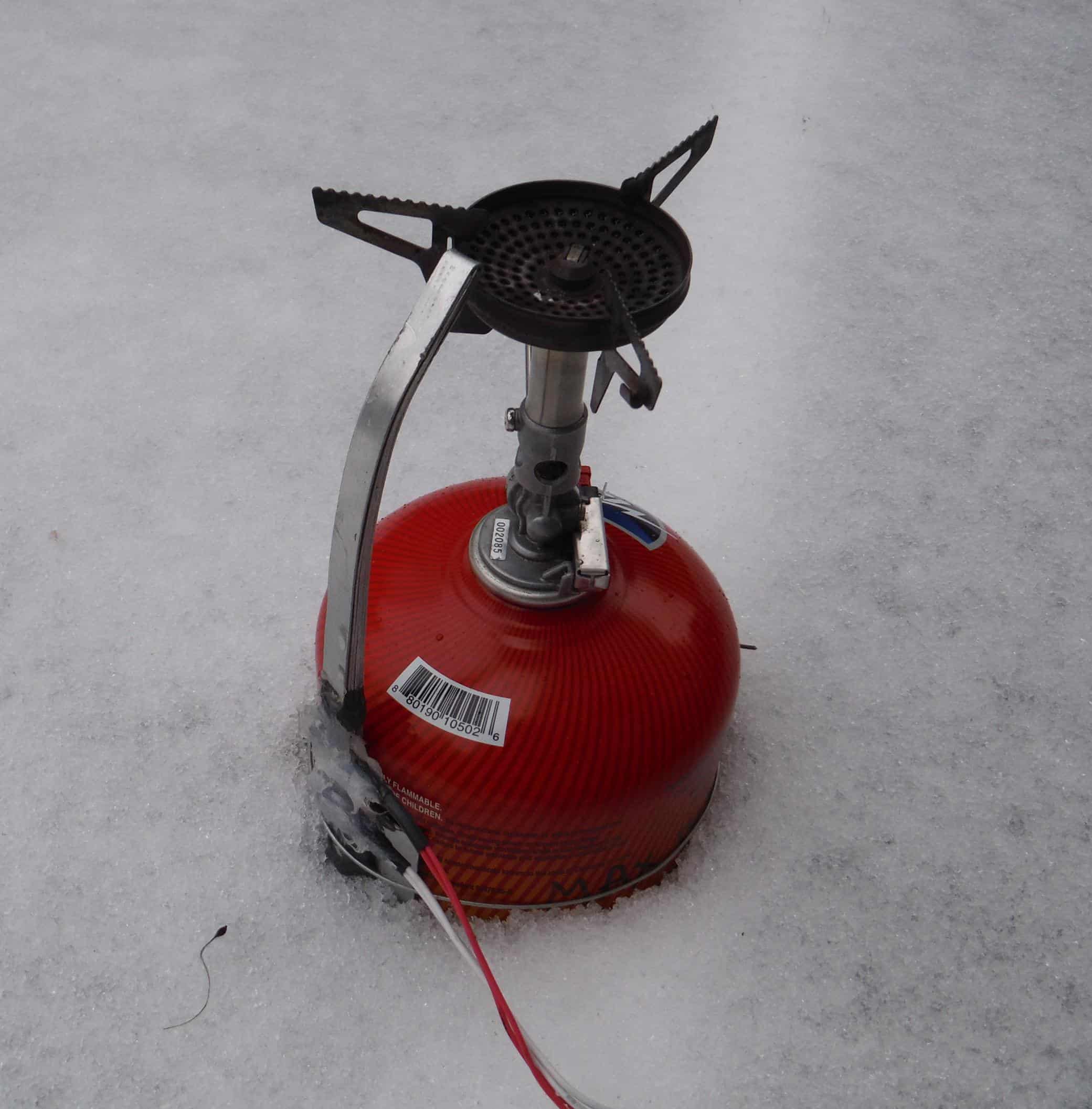Introduction
In Part 1 of this series, I looked at some techniques for using upright canister stoves in cold weather just above the boiling point (BP) of the fuel. The problem here is that during operation the fuel will cool down, due to the latent heat of evaporation as explained in Part 1, to below the BP of the fuel. The reduced vapor pressure will not be enough to push gas out of the canister and stove will die. In this second part, I look at using various canister warming techniques in really cold weather when the ambient temperature is below the boiling point of the fuel. This is where it gets harder, but it is possible with some cunning.
WARNING
These techniques are not intended for use in warm weather, and are not needed in warm weather. If the canister gets too hot it can blow up like an artillery shell: see our article on Exploding Canisters for what can happen.
You must check that the canister isn’t too warm by putting your finger on it, near the bottom where the liquid fuel is. It’s normal for the canister to get warmer up top next to the burner. According to Department of Transportation regulations, the canister (and the fuel) should not be warmer than 120 F (49 C). For some canisters it’s 110 F (43 C): check the label. Backpacking Light’s recommendation is that you should never let the canister get too hot to touch: that’s called the ‘Touch Test’. The threshold is about 104 F (40 C). If there is any question about the temperature, immediately turn off the stove.
These techniques violate stove manufacturers warnings, so use them at your own risk. Manufacturers do not trust users to, for example, not use these techniques in warm temperatures or test temperature with their finger.
Heat Shunt
Member Exclusive
A Premium or Unlimited Membership* is required to view the rest of this article.
* A Basic Membership is required to view Member Q&A events




Home › Forums › Evaporative Heat Loss in Upright Canisters: Part 2 – Evaluating the Efficacy of Canister Warming Techniques at Temperatures Below Freezing